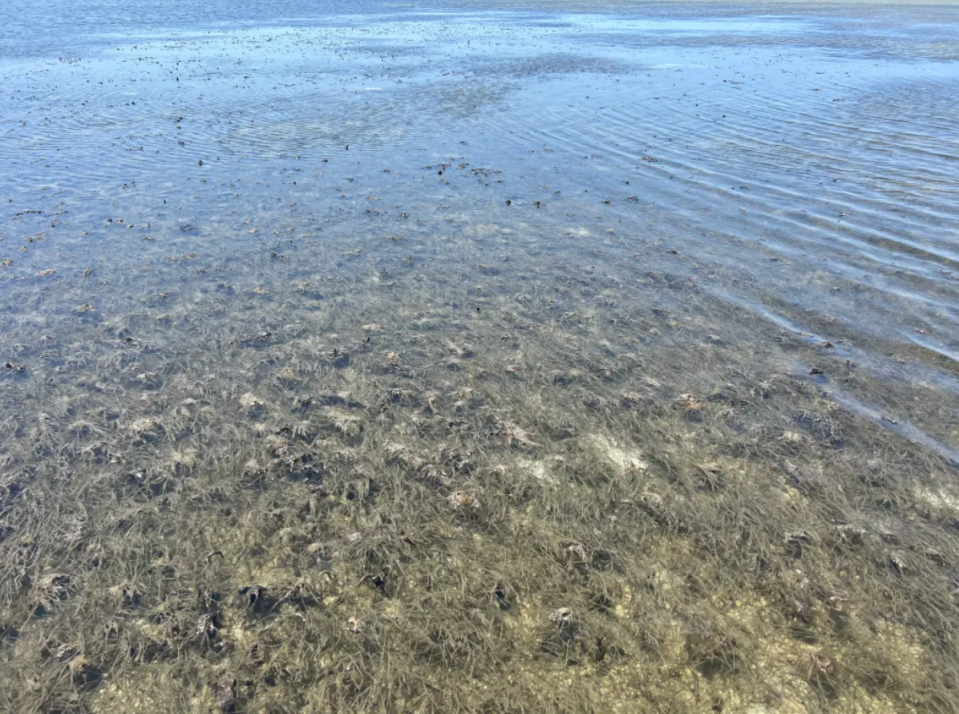St. Lucie River gets zero Lake Okeechobee releases thanks to still-unofficial LOSOM plan
Right now, about 756 million gallons of Lake Okeechobee’s toxic algae-laden water would be pouring into the St. Lucie River every day if the Army Corps of Engineers was operating under its old rules for managing the lake level.
But the Treasure Coast is getting zero discharges — exactly what it wants — because the Corps has been managing the lake as if the new Lake Okeechobee System Operating Manual was in effect, Lt. Col. Todd Polk told TCPalm this week. The agency won't officially adopt the new LOSOM rules until December, the fourth delay in two years.
“In the past, we would have sent more water to the estuaries. We’ve held back,” Polk said. “We did not release high quantities, like in years past when the (Herbert Hoover) Dike was being repaired and vulnerable. We have more flexibility when it comes to safety."
Under the old rules, called the Lake Okeechobee Regulation Schedule (LORS), the Corps would have begun discharges in November 2022 because the lake rose 4 feet after Hurricane Ian, Polk said.
By December, the level was higher than any previous years under LORS, so the Corps began releasing 320 million gallons of water a day to the St. Lucie River on Jan. 22. But it stopped on April 15 because of a toxic algae bloom that's now coating 60% of the lake. Twice the area of the Kennedy Space Center, the bloom is visible from space.
But one storm could change that. Discharges are not “imminent,” but the Corps will begin them if the lake level reaches 16.5 feet, Polk said. It was 15 feet on July 28.
LOSOM delayed again
The Corps initially said LOSOM would be complete by 2021, then delayed it four times: to August 2022, then November 2022, then June 2023 and now December, officials announced Monday.
“It’s as near final as it can get," Polk said. "We don’t expect to have any major adjustments or changes.”
One holdup is a NOAA National Marine Fisheries Service opinion due Aug. 30 on how discharges affect endangered species such as corals, sawfish and sea turtles. The agency in March asked for time to weigh in, although LOSOM had been in the process for four years.
U.S. Rep. Brian Mast (R-Fort Pierce) was angered by the 11th hour delay, and said there are more projects to complete beyond LOSOM.
“LOSOM is going to make a huge difference in the fight against harmful discharges, but it isn’t where our fight ends,” Mast said. “We need to fully fund the Everglades Agricultural Area (EAA) reservoir and Northern Estuaries Restoration Plan Act (NERP), so that we can finally end all discharges to the east coast and send the water south as God intended.”
How LOSOM will reduce Lake O releases

Here’s how LOSOM is projected to curb Lake O discharges by 37%, according to Col. James Booth, the Corps' Florida commander:
Zero discharges to the St. Lucie River "under normal conditions," meaning 95% of the time. Under LORS, there were discharges about 37% of the time.
Up to 1.3 billion gallons per day annually discharged to the Caloosahatchee River, the equivalent of 2,000 Olympic swimming pools. Unlike the St. Lucie, the Caloosahatchee needs some freshwater to balance salinity from the Gulf of Mexico.
65 billion gallons annual average flowing south to the thirsty Everglades — triple that under LORS - enough to cover 200,000 acres in a foot of water.
Prioritizes dry season discharges when microcystin is low.
In creating LOSOM, the Corps had to balance the interests of over 50 stakeholders that offered an opinion:
St. Lucie River advocates: Want zero discharges
Caloosahatchee River advocates: Want discharges only during winter months
Okeechobee and Palm Beach residents: Want Lake O water for drinking
Everglades Agricultural Area farmers: Want Lake O water for irrigation during dry months
Glades residents: Want Lake O managed so it won't breach the Herbert Hoover Dike and flood their towns
Everglades advocates: Want clean Lake O water for its large ecosystem
Lake Okeechobee advocates: Want clean water for a healthy lake ecosystem.
“The Corps has to make decisions, and there’s going to be winners and losers,” said Audubon Florida biologist Paul Gray, who is worried about LOSOM keeping the lake level as high as 17.25 feet for longer periods than LORS.
The ideal level for the lake’s ecology is 12-15 feet, he said. At 15 feet, as it is now, the marsh is flooded. At 16 feet, where it would be under LORS, it blocked sunlight and smothered grasses. Shorebirds such as sandpipers, dabbling ducks and wading birds that relied on the grass for food flocked away. Bass and migrating birds such as warblers also found nothing to eat.
“When you get above 15 1/2 feet, the submerged aquatic vegetation starts getting stressed. When you get to 16, it's in stress mode and when you get to 17, it is in Armageddon mode,” Gray said. “LORS was too deep for the lake and left it in a big mess. Now they're going to do LOSOM, and LOSOM is going to make it even deeper."
Most stakeholders want the water to flow south as nature intended, said Captains for Clean Water founder Chris Wittman.
“The high lake doesn’t benefit anyone but the sugar industry,” Wittman said.
Agricultural stakeholders said they want LOSOM to keep the lake level even higher during the dry winter season, when they need irrigation water.
“We still feel that it falls a bit short of providing real deference to the state and the district with regards to water storage,” said Florida Farm Bureau spokesperson Jake Fojtik.
Katie Delk is an environmental reporter for TCPalm. Contact her at katie.delk@tcpalm.com or 772-408-5301. Check for updates at @katie_delk.
This article originally appeared on Treasure Coast Newspapers: Army Corps delays LOSOM yet uses new Lake Okeechobee management plan

